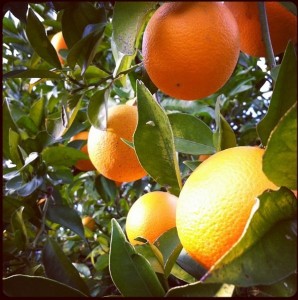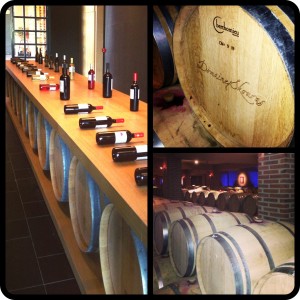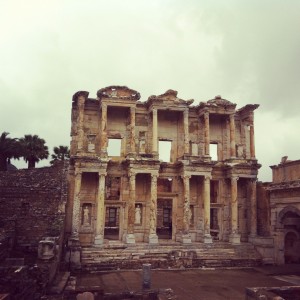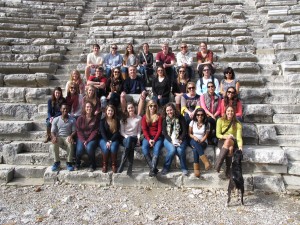After we finished our lunch, we visited the Acropolis Museum. The country of Greece does not let any of its statues or ancient relics remain outside in order to maintain their condition, so this is where many statues of the Acropolis, and other places in Greece are located. An interesting element of the Acropolis Museum is that it is actually built on top of an archaeological site. The building is built on top of pillars in order to preserve the condition of the archaeological site. The floor of the museum allows for you to see the site underneath your feet as you tour the artifacts inside.

Once inside, we discussed many different topics with Eleni, our tour guide. She talked of how it was tradition in Greek households, when the family moved in, to sacrifice a rooster and eat it. We saw plates with rooster bones still intact that had been excavated from the site below our feet.
We talked much about the traditions of marriage between Greek men and women. Women were married off between the ages of 16-18. They never had the chance to fall in love because they did not leave the house much. They were usually married to a man that was quite older, who had fought in many battles and survived. This was to ensure that the dowry that the women’s family paid to the man would not be wasted. This is why men of younger ages didn’t get married, because they had not fought enough battles to prove their worth of marriage.
Archaeologists found many storage pits around the Acropolis when they excavated it filled with statues and ancient items. This is because the items were considered sacred, so the Athenians did not throw them away whenever they were damaged. Rather, they simply stored them in these pits. This is how parts of the Parthenon were found that were thought to have been erased by the Christians and Muslims.
We saw many statues while inside the museum as well. The statues that date back to the 6th century BC are found to be usually smiling, and the men are depicted with long hair. All of the statues faces are usually depicted as that of the gods and goddesses, but the owners who paid for them usually threw in personal choices of their own like the clothing and hairstyle. The museum even had a statue that had been recreated and painted, as the original would have been. Some symbols that are commonly found on statues are the Olive Tree, the snake, and the owl. These are the three symbols of Athens and of Athena.
The museum had a representation of what the top decorations of the Parthenon looked like. Many of them had been copies because the originals are in London. The Museum offered much insight into the power of Athens in ancient times and the customs it had as well. We departed the museum after this, and had the option to go visit the theater and Zeus’s temple or walk around the Plaka to end our day.





















